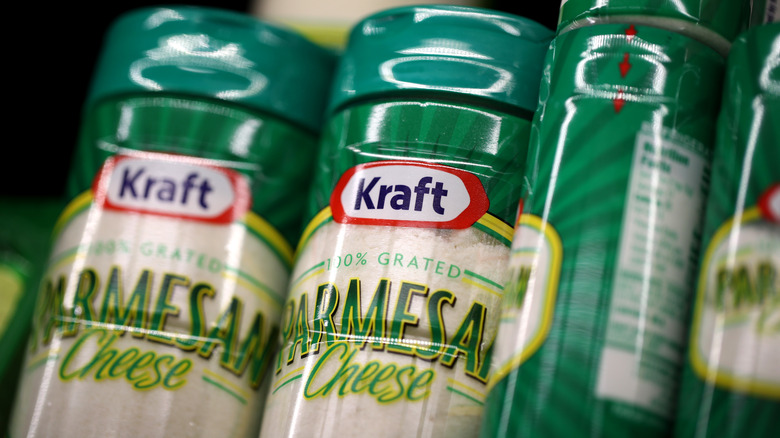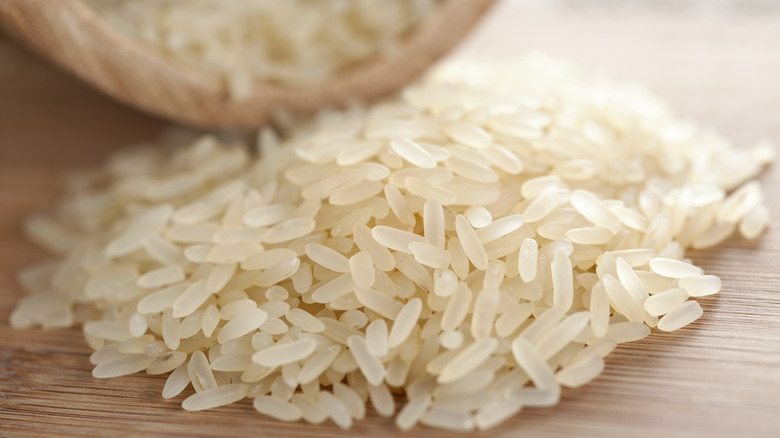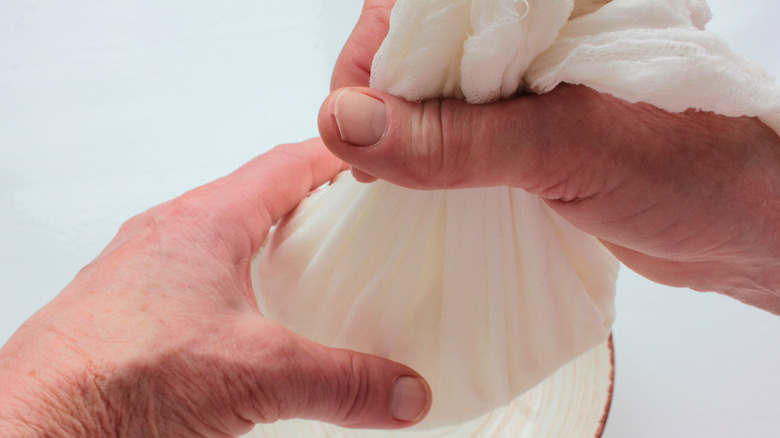How To Stop Grated Parmesan From Clumping Together In The Shaker
Imagine this: You're sitting in your favorite pizza joint waiting on a freshly baked pie, customized to your liking, to emerge from the molten oven. When the meal finally arrives, you expectantly reach for the parmesan cheese container and give it a good jiggle. To your chagrin, however, you realize that no granular flakes of that ivory goodness have descended onto your steaming hot slice, because the cheese is as clumped up as hardened glue.
The same grated parmesan fail can easily befall a home chef garnishing a personal pizza creation, their favorite pasta dish, or a delicious chicken parmesan recipe – even if you've done your best to extend the cheese's lifespan by refrigerating it. Many shaker cheese brands use preservatives that aim to prevent mold and clumping, per The Counter, but they don't always work perfectly, either. Luckily, there's still a way to avoid this lumpy parmesan pitfall and ensure your grated cheese tumbles effortlessly from the shaker each and every time. If you've ever had a mishap with your iPhone involving water, you're probably familiar with the ol' "rice in a bag" trick to remove unwanted moisture — but did you know that it's a common food hack as well?
Uncooked rice grains remove unwanted moisture
Some food lovers report that adding uncooked rice grains to your grated parmesan cheese shaker keeps moisture at bay and prevents clumping. The reason this hack works is that rice is hygroscopic, meaning that it will absorb moisture found in the environment when there is "high relative humidity (RH)" present, according to the International Rice Research Institute. The hygroscopic nature of the kitchen staple also explains why restaurants often add rice to salt shakers to preserve texture.
But before you go and add copious amounts of uncooked rice to your parmesan cheese shaker, let us stop you right there. Unlike salt shakers, conventional cheese shakers have large enough holes on the lids that contents can pass through — including rice. So, to prevent these gritty grains from ending up in your dish as an unwanted garnish, try using cheesecloth to create a secure pouch to hold the uncooked rice. Simply tie off the pouch with a little cooking twine and add it to the cheese shaker, and presto! You're ready to shake away, baby.
Cheesecloth is your new best friend
Using gauze-like products like cheesecloth is nothing new to chefs and aspiring home cooks — but if you're unfamiliar with the material, allow us to acquaint you, as it is one of the simplest yet most essential kitchen tools. Cheesecloth is a lightweight cotton fabric, made in various thread counts, through which liquids can pass while solids remain. This ingenious tool allows sachets of herbs to be sealed and used for their flavors without the particles seeping into the dish, much like the above-mentioned rice pouch allows the humidity to pass into the rice but not the solid rice to fall out of the shaker. Just make sure to sanitize the aptly-named material before using it in your container.
Sterile medical gauze can easily be substituted for cheesecloth should you not have the real deal in-house. These materials can also make a great makeshift sieve, if needed, to strain the pasta on which you might use the parmesan. And when the meal is over, you can even use the fabric to cover your leftovers and clean up your used cutlery! So the next time you think about enjoying a meal with luscious grated parmesan, just break out the cheesecloth and dry rice grains to keep your cheese clump-free and enjoy an easier dinner all around.


